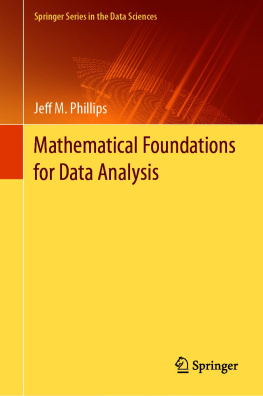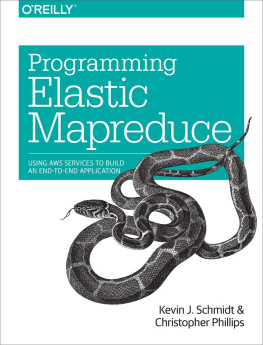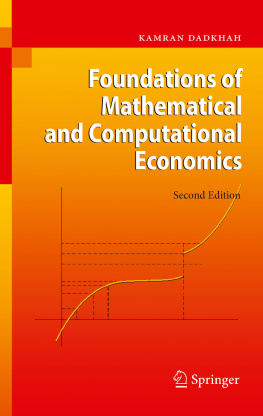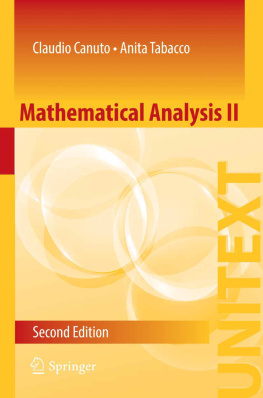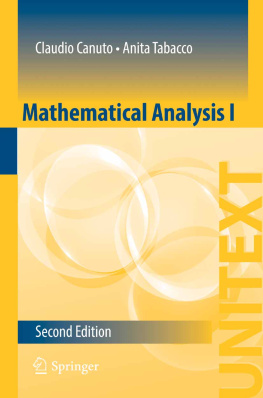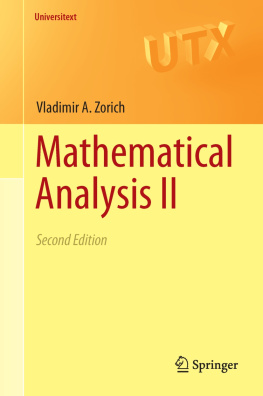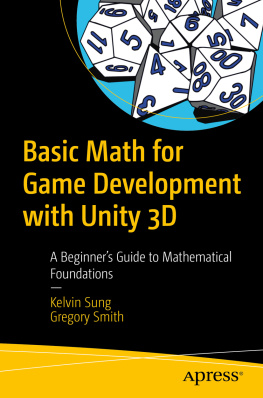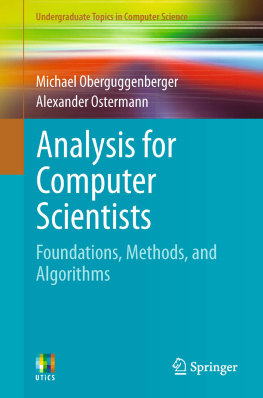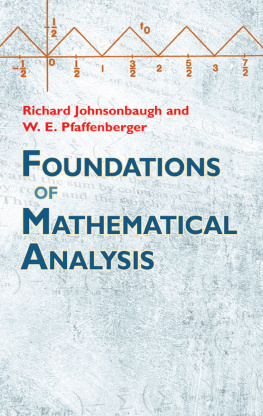Jeff M. Phillips - Mathematical Foundations for Data Analysis
Here you can read online Jeff M. Phillips - Mathematical Foundations for Data Analysis full text of the book (entire story) in english for free. Download pdf and epub, get meaning, cover and reviews about this ebook. publisher: Springer International Publishing, genre: Children. Description of the work, (preface) as well as reviews are available. Best literature library LitArk.com created for fans of good reading and offers a wide selection of genres:
Romance novel
Science fiction
Adventure
Detective
Science
History
Home and family
Prose
Art
Politics
Computer
Non-fiction
Religion
Business
Children
Humor
Choose a favorite category and find really read worthwhile books. Enjoy immersion in the world of imagination, feel the emotions of the characters or learn something new for yourself, make an fascinating discovery.
- Book:Mathematical Foundations for Data Analysis
- Author:
- Publisher:Springer International Publishing
- Genre:
- Rating:3 / 5
- Favourites:Add to favourites
- Your mark:
- 60
- 1
- 2
- 3
- 4
- 5
Mathematical Foundations for Data Analysis: summary, description and annotation
We offer to read an annotation, description, summary or preface (depends on what the author of the book "Mathematical Foundations for Data Analysis" wrote himself). If you haven't found the necessary information about the book — write in the comments, we will try to find it.
Mathematical Foundations for Data Analysis — read online for free the complete book (whole text) full work
Below is the text of the book, divided by pages. System saving the place of the last page read, allows you to conveniently read the book "Mathematical Foundations for Data Analysis" online for free, without having to search again every time where you left off. Put a bookmark, and you can go to the page where you finished reading at any time.
Font size:
Interval:
Bookmark:
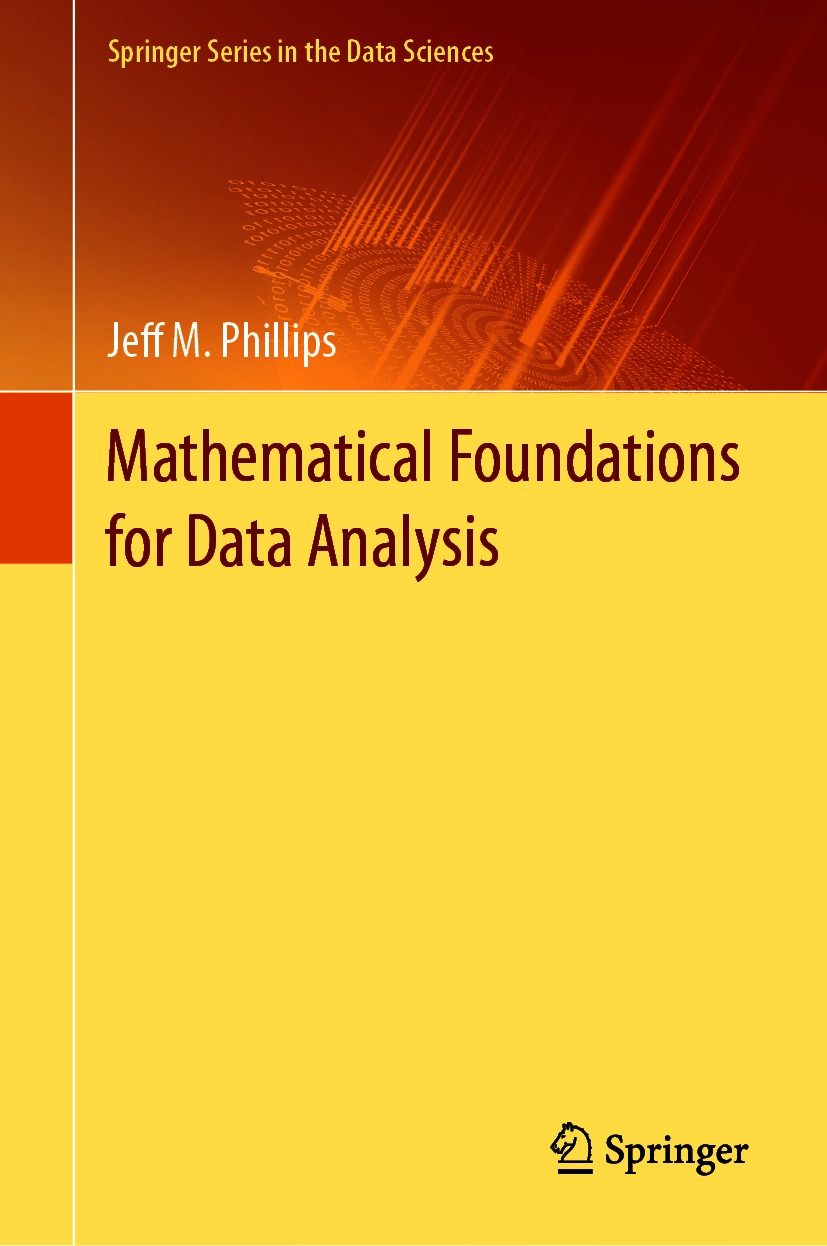
Springer Series in the Data Sciences focuses primarily on monographs and graduate level textbooks. The target audience includes students and researchers working in and across the fields of mathematics, theoretical computer science, and statistics. Data Analysis and Interpretation is a broad field encompassing some of the fastest-growing subjects in interdisciplinary statistics, mathematics and computer science. It encompasses a process of inspecting, cleaning, transforming, and modeling data with the goal of discovering useful information, suggesting conclusions, and supporting decision making. Data analysis has multiple facets and approaches, including diverse techniques under a variety of names, in different business, science, and social science domains. Springer Series in the Data Sciences addresses the needs of a broad spectrum of scientists and students who are utilizing quantitative methods in their daily research. The series is broad but structured, including topics within all core areas of the data sciences. The breadth of the series reflects the variation of scholarly projects currently underway in the field of machine learning.
More information about this series at http://www.springer.com/series/13852

This Springer imprint is published by the registered company Springer Nature Switzerland AG
The registered company address is: Gewerbestrasse 11, 6330 Cham, Switzerland
to Bei, Stanley, and Max
This book is meant for data science students, and in particular preparing students mathematically for advanced concepts in data analysis. It can be used for a self-contained course that introduces many of the basic mathematical principles and techniques needed for modern data analysis, and can go deeper in a variety of topics; the shorthand math for data may be appropriate. In particular, it was constructed from material taught mainly in two courses. The first is an early undergraduate course which is designed to prepare students to succeed in rigorous Machine Learning and Data Mining courses. The second course is the advanced Data Mining course. It should be useful for any combination of such courses. The book introduces key conceptual tools which are often absent or brief in the undergraduate curriculum, and for most students, helpful to see multiple times. On top of these, it introduces the generic versions of the most basic techniques that comprise the backbone of modern data analysis. And then it delves deeper into a few more advanced topics and techniquesstill focusing on clear, intuitive, and lasting ideas, instead of specific details in the ever-evolving state of the art.
Consistent, clear, and crisp mathematical notation is essential for intuitive learning. The domains which comprise modern data analysis (e.g., statistics, machine learning, and algorithms) until recently had matured somewhat separately with their own conventions for ways to write the same or similar concepts. Moreover, it is commonplace for researchers to adapt notation to best highlight ideas within specific papers. As such, much of the existing literature on the topics covered in this book has varied, sometimes inconsistent notation, and as a whole can be confusing. This text attempts to establish a common, simple, and consistent notation for these ideas, yet not veer too far from how concepts are consistently represented in the research literature, and as they will be in more advanced courses. Indeed, the most prevalent sources of confusion in earlier uses of this text in class have arisen around overloaded notation.
This book is written for students who have already taken calculus, for several topics it relies on integration (continuous probability) and differentiation (gradient descent). However, this book does not lean heavily on calculus, and as data science introductory courses are being developed which are not calculus-forward, students following this curriculum may still find many parts of this book useful.
For some advanced material in Sampling, Nearest Neighbors, Regression, Clustering, Classification, and especially Big Data, some basic familiarity with programming and algorithms will be useful to fully understand these concepts. These topics are deeply integrated with computational techniques beyond numerical linear algebra. When the implementation is short and sweet, several implementations are provided in Python. This is not meant to provide a full introduction to programming, but rather to help break down any barriers among students worrying that the programming aspects need to be difficultmany times they do not!
Probability and Linear Algebra are essential foundations for much of data analysis, and hence also in this book. This text includes reviews of these topics. This is partially to keep the book more self-contained, and partially to ensure that there is a consistent notation for all critical concepts. This material should be suitable for a review on these topics but is not meant to replace full courses. It is recommended that students take courses on these topics before, or potentially concurrently with, a more introductory course from this book.
Font size:
Interval:
Bookmark:
Similar books «Mathematical Foundations for Data Analysis»
Look at similar books to Mathematical Foundations for Data Analysis. We have selected literature similar in name and meaning in the hope of providing readers with more options to find new, interesting, not yet read works.
Discussion, reviews of the book Mathematical Foundations for Data Analysis and just readers' own opinions. Leave your comments, write what you think about the work, its meaning or the main characters. Specify what exactly you liked and what you didn't like, and why you think so.

